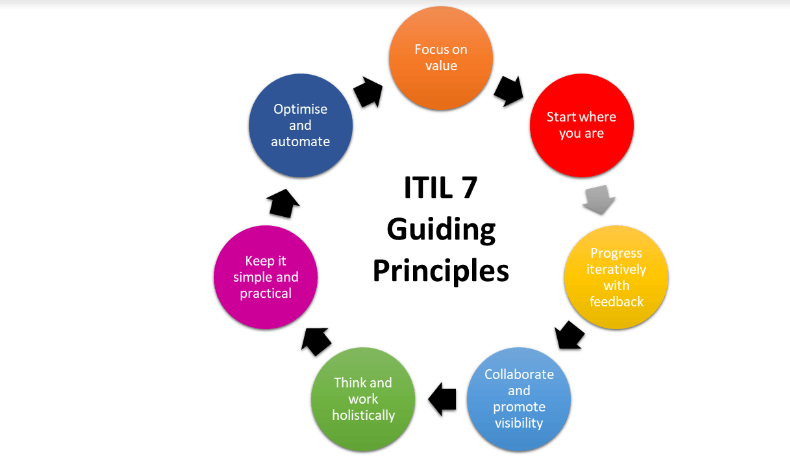ITIL, which stands for “Information Technology Infrastructure Library,” is a framework for IT service management that has seen widespread adoption. It offers a collection of best practices and guidelines for the delivery of high-quality information technology services that are in line with the requirements of the business. ITIL and ITIL Training assists organizations in improving their service management capabilities and increasing the level of satisfaction they provide to their customers.
Introduction:
The underlying principles and components that serve as the basis for the framework are what is referred to as the key concepts of ITIL. They are as follows:
A service is defined as a mechanism of delivering value to consumers in ITIL.To delve deeper into this topic, you can learn more about it at Tech Blogs In USA.
This is accomplished through facilitating customers’ desired outcomes and meeting their requirements. Services can either be material in nature (such as supplying hardware) or immaterial (such as giving technical help, for example). The IT Infrastructure Library (ITIL) places an emphasis on the delivery of value through services.
Management of Services
Management of services refers to the practice of organising, putting into action, and maintaining control over the supply of services. It encompasses tasks such as creating, transitioning, operating, and upgrading services in order to fulfil the agreed-upon service levels and the expectations of the client.
Service Lifecycle
The ITIL service lifecycle consists of five stages that guide the administration of services at each stage, from the moment when they are conceived to the stage where they are retired. Service Strategy, Service Design, Service Transition, Service Operation, and Continual Service Improvement are the steps that are involved. At each level, there are distinct processes and activities that must be carried out to guarantee efficient service administration.
Service Value System (SVS)
The Service Value System (SVS) is an essential component of ITIL 4 that represents the overall model for developing, delivering, and maintaining services. It includes the guiding concepts, governance, practises, and other components that, when combined, make it possible to create value.
ITIL 4 Elements of Service Management:

The IT Infrastructure Library, Version 4 presents four elements of service management that must be taken into consideration during the process of building and delivering services. The following are the dimensions:
Organizations and individuals
This topic focuses on the structure, culture, skills, and competencies of an organization as well as the individuals that work there.
Information and Technology
Deals with the information and technological assets that must be had in order to provide services in an efficient manner. Considers the relationships and partnerships with other entities involved in service delivery, such as partners and suppliers. The term “value streams and processes” is used to describe the workflows, activities, and procedures that are involved in the production of value and its distribution to clients.ITIL 4 outlines seven guiding principles that offer direction for decision-making and actions in service management. These principles are referred to as “guiding principles.” Focusing on value, beginning where you are, thinking and working holistically, collaborating and encouraging visibility, keeping things simple and practical, advancing iteratively with feedback, optimizing and automating are some of the ideas that fall under this category.
ITIL Practises:
ITIL 4 adds a series of practices that provide thorough guidance for certain areas of service management. These practices are known as the IT Infrastructure Library Practises. These practises encompass a wide variety of tasks, some of which are as follows: incident management, problem management, change control, service level management, service catalogue management, and several more.
Continual Service Improvement (CSI)
Continual Service Improvement (CSI) is an essential concept in ITIL that focuses on the continuous evaluation and improvement of IT services, processes, and capabilities. CSI is also known as “Continual Service Improvement.” It is a circular strategy with the goals of determining problem areas, establishing targets, planning changes, putting improvements into action, and evaluating the results of these efforts. CSI makes sure that the services are always aligned with the changing demands of the business as well as the expectations of the customers.
Service degree Agreement (SLA):
A legal agreement between a service provider and its clients that outlines the expected degree of service quality. An SLA is also known as a service level contract. It lays forth the obligations, performance targets, and indicators that are mutually agreed upon by both sides. Service level agreements are helpful in establishing clear expectations, ensuring openness, and providing a framework for monitoring and measuring the performance of services.
Change Management
Change Management is a procedure that is part of ITIL that focuses on controlling and managing changes that are made to the IT infrastructure and services. It entails determining the extent to which changes may affect a system, devising strategies for mitigating associated risks, securing necessary approvals, planning and carrying out the changes, and analysing how well they work. Change management is a process that helps reduce interruptions and ensures changes are carried out in a controlled and coordinated manner.
Management of incidents
Management of incidents is a procedure that focuses on resuming normal service operations as quickly as possible after an incident has taken place. It entails recording and classifying problems, prioritising their resolution based on impact and urgency, diagnosing the underlying cause, and putting in place suitable workarounds or fixes. The goal of incident management is to reduce the damage that incidents have on the company and get operations back to normal as quickly as possible.
Problem management
Problem management focuses on identifying and treating the underlying causes of reoccurring incidents in order to avoid those incidents from happening again in the future. It entails determining the underlying causes of issues, spotting potential problems ahead of time, and putting in place either permanent solutions or workarounds. The goals of problem management are to lessen the detrimental effect that issues have on service quality and to cut down on the total number of events that occur over time.
The service desk acts as a central point of contact for all interactions between the users and the service provider. It operates as a central point where issues can be reported, service requests can be made, and assistance can be sought. Throughout the entirety of the service management process, the service desk is responsible for managing incidents and service requests, offering first-line help, and ensuring that effective communication and coordination are maintained.
Configuration management & Certifications

The primary objective of configuration management is to ensure that information regarding the configuration items (CIs) found inside an IT system is kept correct and current. It requires locating, recording, and managing configuration items (CIs), establishing relationships between those configuration items, and ensuring that the configuration baseline is kept intact. Configuration management provides effective change management, problem management, and other service management activities. The proper implementation of ITIL and the achievement of successful IT service management inside an organization are both dependent on the individual’s level of comprehension of these fundamental ideas. Individuals who are interested in obtaining ITIL certifications or improving their service management practices might benefit from the solid basis that they give.
Online certifications have gained significant popularity in recent years due to their convenience and flexibility. These online certifications allow individuals to acquire new skills and knowledge. In conclusion, online certifications have become a popular choice for individuals seeking to enhance their skills and improve their career prospects. Their accessibility, flexibility, and recognition make them a valuable tool in today’s digital age.






